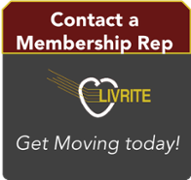
Food is fuel for your body so you want to be sure you are giving it what it needs to optimize your workout and your overall health. Without enough quality fuel, your metabolism gets the message it needs to slow down to preserve what calories you do have left in your body (storing all and any fat), or if all of your glycogen stores (your body breaks down carbohydrates into glycogen to use for energy) are depleted, your body will try slow you down, possibly making you feel nauseous or faint, or in more extreme cases may eat away at your muscles when it runs on empty. Not fueling properly for your workout can be bad for your blood sugar, your muscles and ruin your performance.
Fueling for (and recovering from) exercise matters most when you are performing a longer and more intense workout. No matter what you are doing, though, you want to make sure to eat any small snacks at least 20 - 30 minutes pre-workout, which leaves time for digestion. Keep any bigger meals to at least two hours before your workout.
Before Your Workout: If you are eating an hour or two before a workout, make sure to eat a small amount of something easily digestible. Try to stay away from anything with too much fiber as it takes a long time to digest and may cause an upset stomach. Carbs are important and depending on your workout you may want to add in some protein to stave off hunger as well. Some examples; half a banana, some greek yogurt, half of a fruit and nut bar like a Larabar, or almond butter on a piece of whole grain toast.
After Your Workout: Again, it depends on how long you exercised and the intensity of your exercise when considering what to eat when you are done. If your workout is under an hour and not especially intense, no post workout snack or meal is necessary. I know when I plan to run for 30 or 40 minutes, I love to run mid morning right in between breakfast and lunch, no special snacking required. If you had a more lengthy workout and/or did strength training, be sure to eat a little something with healthy carbs and protein after. Some examples, cottage cheese and peaches, Triscuits and cheese, almond or natural peanut butter on whole grain bread, or a handful of almonds and fruit. Just don't overdo it!
Experiment with your pre and post workout meals and snacks. Make sure you drink plenty of water and find what works best for you! If you need ideas for healthy snacks, check out some of our favorite healthy recipes.
Topics: LivRite News
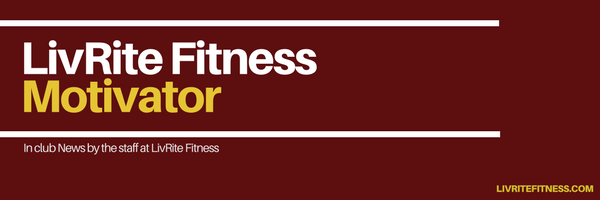
When you started your exercise program, whether to lose weight or improve your overall health, your enthusiasm and motivation were high. Even though exercise wasn’t the most exciting activity you had experienced, you began feeling better and seeing results from your hard work. You managed to get yourself out of bed early, to squeeze in a little gym time each day, and stick to your plan without much effort.
But then slowly, all of it began to wear off. You started finding reasons to sleep in and found “better” things to do with your time. Then before you realized it, you had missed a whole week and your drive to continue was missing.
Is this common scenario just another motivation issue? Probably not. Could something else be getting in the way of the excitement and effectiveness of your previously-rewarding workouts? The answer is yes!
Luckily, you can learn to identify the signs that it’s time to shake-up your workout routine so you can remain consistent and enthusiastic about exercise. Here are four of the most common signs it''s time to change your workout routine and what you can do to get back on track!
Top 4 Signs Your Workout Isn’t Working
1. YOUR WORKOUT IS NO LONGER CHALLENGING.
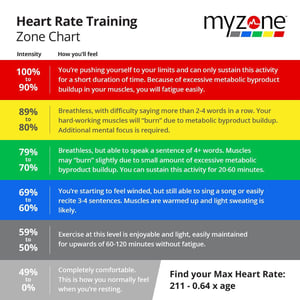
Running a 10-minute mile, for example, becomes easier as time goes on. If your workouts aren't challenging you anymore, it can be helpful to wear a heart rate monitor.
Your heart rate will change over time as you become more fit. By using a heart rate monitor, you'll know to change up or intensify your routine, and ensure that you're working in your target heart rate zone.
Challenging your body improves your fitness level and can also provide a sense of accomplishment as you become stronger and work toward your goals. Get a MYZONE heart rate belt today and save $50.00.
2. Your workout isn’t giving you results anymore.
Someone who does the same activity all the time is likely to plateau much sooner than someone who varies his/her workouts. Just as you can get bored by always doing the same exercises, your body can also adapt to these exercises so that they don’t offer the same benefits that they once did.
A little variety might be just the thing you need to get the scale moving again or bust through that strength plateau. “Variety” means either changing something about your current routine (adding speed, distance, hills, resistance, etc.) or trying a totally different activity.
If you like some consistency and don’t want to change your workout each time you hit the gym, change your routine at least every 4-8 weeks (this includes incorporating changes to both your cardio and strength training exercises). This will keep your muscles challenged, your body guessing, and the results coming!
3. Your workout leaves you more tired and sore than before
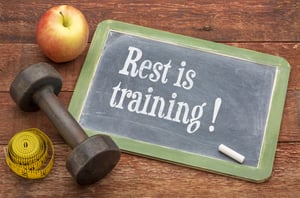
Exercise should give you more energy, not leave you feeling rundown. If you're feeling overly tired or perpetually sore, you could be overtraining. Your body needs time for rest and recovery. It is during this down time that you build strength and endurance by allowing your muscles to rebuild and repair.
If you don't give your body ample recovery time, you'll become weaker instead of stronger. If you have been overtraining, your first priority should be rest. You might need up to a week off to recharge mentally and physically.
Once you are feeling better, start back slowly. Reevaluate your workout program and find ways to make changes that will prevent this from happening again.
4. YOUR WORKOUT BORES YOU.
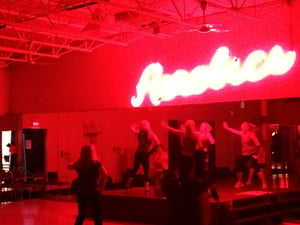
You used to like walking on the treadmill, so why do you dread your workout each day? It’s easy to get bored if you sick with the same routine for too long.
Sometimes it helps to add variety to your walks. For example, try adding speed intervals, putting new music on your phone or bringing a friend along. If all of that isn’t enough, then maybe it’s time to try a new activity.
Perhaps you’ve always wanted to work with a personal trainer or are interested in trying a class at your gym. LivRite Fitness offers a wide variety of workout classes to try. Find your class and try one out today!
Change can help keep your workouts fun and interesting, giving you something to look forward to. And this is exactly what will keep you coming back for more.
Changing your workout routine whenever these signs arise will help keep your motivation high as you work to improve your fitness level. The key is to pay close attention to how you're feeling both physically and mentally.
Exercise shouldn't be a chore that you dread, but something that makes you feel good about yourself!
Topics: LivRite News
5 back workouts to eliminate the dreaded back fat
Training your back is essential to any good exercise program. Our back muscles are involved in just about every move we make each day, so it is important that they are strong enough to handle all of that work. A strong back also provides a solid foundation of strength for other muscle groups. You will have trouble being able to do squats or do a plank –two essential movements-if your back is weak.
Sadly, back day is one of the most overlooked workout days. People neglect working out their back muscles because it is not as glamorous as some of the other muscle groups such as biceps, chest, and core. Overtraining your chest and neglecting your back can lead to muscle imbalance.
Aside from the strength and functionality benefits of training your back, you’ll find that a solid back and well-developed shoulders make your waist look smaller.
That’s why today, we’re going to focus on the back.
Start incorporating these five back workouts into your routine to eliminate back fat!
Decline bench dumbbell Pull-over
Step 1: Lie down on a decline bench with both legs securely locked in position. Reach for the dumbbell behind the head. Slowly lift the dumbbell up from the floor by using your arms.
Step 2: When positioned properly, your arms should be fully extended and perpendicular to the floor. This is the starting position.
Step 3: Begin by moving the dumbbell back down as if you were going to place it on the floor, but instead, stop when the arms are parallel to the floor. Tip: Keep the arms fully extended at all times. The movement should only happen at the shoulder joint. Inhale as you perform this portion of the movement.
Step 4: Now bring the dumbbell up while exhaling until you are back at the starting position. Remember to keep full control of the dumbbell at all times.
Step 5: When finished with your set, slowly lower the barbell back down until it is level with your head and release it.
Step 6: Complete 3-4 sets of 10-12 repetitions on each side.
Lat Pulldown
Step 1: Sit at the Lat Pulldown station and grab the bar with an overhand grip that’s just beyond shoulder width. Your arms should be completely straight and your torso upright.
Step 2: Pull your shoulder blades down and back, and bring the bar to your chest. Pause, then slowly return to the starting position.
Step 3: Complete 3-4 sets of 10-12 repetitions on each side.
Plank rows
Step 1: Take a dumbbell in each hand and get down into push-up position so that your toes are touching the floor and your hands holding yourself up on the dumbbells.
Step 2: Make your body into a straight line (Plank position).
Step 3: Pull the right arm dumbbell up to your chest while you balance yourself on the other arm.
Step 4: Complete 3-4 sets of 10-12 repetitions on each side.
Seated row
Step 1: Sit down on the low row with your knees bent and grasp the cable attachment. It often has a triangle handle, but it may be a bar.
Step 2: Position yourself with your knees slightly bent and so that you have to reach to grab the handle with outstretched arms yet without curling the lower back over.
Step 3: Your back should be straight at all times, not bent, and you will want to keep your torso still throughout the exercise.
Step 4: Brace the abdominals and you’re ready to row.
Step 5: Complete 3-4 sets of 10-12 repetitions
Single arm cable squat row
Step 1: Hook the handle up to the cable machine and place the handle at a notch about waist height.
Step 2: Grab the handle with one hand and pull it out so that the cable is tight.
Step 3: With your arms extended bend at the knees and squat down till your knees make a 90 degree angles.
Step 4: while holding the squat position, pull the handle straight back and pinch your shoulder blades together.
Step 5: Complete 3-4 sets of 10-12 rows while holding the squat position then switch to complete 10-12 rows on the opposite side.
Need help getting started? Our highly trained and certified staff would love to help you reach your goals. Click on the link below to request a trainer. Don't wait, start today!
Looking for more great back exercises? Check out our full list of back workouts.
Topics: LivRite News
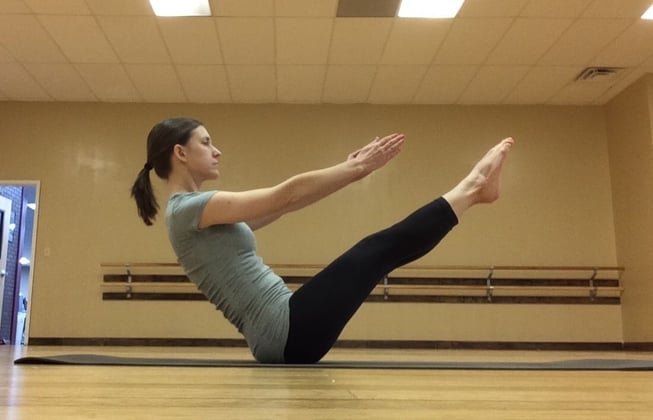
Pilates is a low impact form of exercise that strengthens muscles, improves flexibility and balance. It isn’t a cardio workout that gets your heart rate up, rather it is a series of movements done with concentration, control and flow with focus on your breath. Pilates elongates and strengthens, improving muscle elasticity and joint mobility. Here are three basic things to know about Pilates.
1. Pilates Develops Core Strength
Developed by Joseph Pilates in World War I, Pilates focuses on the muscles that Pilates refers to as your powerhouse. These are the muscles that circle the body just below the navel (including abdominals, oblique, lower back and glutes) and that we rely on to support a strong back, good posture and efficient movement patterns. Your core muscles are the focus but are not the only ones that get a workout. You will also feel your arms and legs working when they are controlling and/or applying loads to your powerhouse during movements.
2. Many Types of Pilates Classes
There are many different types of Pilates classes. Some classes incorporate other types of exercises along with classic Pilates or Pilates inspired moves. Other classes may only do Pilates exercises on a mat, some use an apparatus like a Reformer or a Cadillac, and others may use props such as weights, balls, magic circles or resistance bands.
3. Pilates Benefits All Fitness Levels
With thousands of possible exercises and modifications, plus being a low impact exercise, Pilates workouts can be tailored to pretty much everyone. Building from core strength, focusing on proper alignment, and a body/mind integrative approach make Pilates beneficial to all. Research has found that Pilates can be an effective treatment for injuries and illnesses such as: chronic neck and back pain, hip or knee replacement, fibromyalgia, and arthritis.
Joseph Pilates once said, “Physical fitness is the first requisite of happiness.” Pilates is a great addition to your workouts, give it a try!
Ready to try Mat Pilates? Try my class at the LivRite Fitness Noblesville location on Mondays at 9:00 am. Or click on the link below to schedule a visit to the LivRite Fitness near you!
Topics: LivRite News

There is no doubt that ab exercises are effective and important for your health
However, the most popular ab workouts people do are sit-ups and crunches. These exercises can cause excessive flexing of the spine, especially if there are too many repetitions. Excessive flexing of the spine can cause compression of your spinal discs, causing them to bulge and press on nerves. This can lead to back pain or more serious medical conditions. Switch up your routine by trying these 5 ab exercises below!
Things to keep in mind before getting started:
- Never think you can crunch away a bad diet: Abs are made in the kitchen. What does this mean? Going to the gym and doing rounds of sit-ups won’t get rid of much stomach fat. You need to address the fat, by addressing what you eat first. Once you change your diet, you will then start seeing the results that you want with these exercises.
- Don’t hold your breath: Correct breathing techniques when you’re doing ab exercises-or being physically active in general-can make a huge difference in the outcome of your workout. Breathing correctly means your workout can leave you feeling energized, while improper breathing can leave you feeling fatigued. It might even result in injury or other health problems, such as headaches, dizziness and pain in the neck and shoulders. Therefore, it’s important to bring mindfulness into your breathing when you’re doing stomach exercises. The golden rule for breathing when you’re working out is to exhale during the hard part and inhale during the easy part.
Example: For the Roman Chair leg raise, exhale when you’re lifting your legs and inhale when you’re lowering them.
Roman Chair Leg Raise
Step 1: Position yourself in an upright roman chair. Be sure your back is upright and against the back of the chair. Also, be sure your elbows are directly under your shoulders when placing them on the pad.
Step 2: Begin exercise by slowly raising your legs up until they are parallel to the ground, while keeping them as straight as possible.
Step 3: Slowly lower legs back down to the starting position. Be sure you lower your legs all the way back down before raising them back up. Repeat for 3-4 sets of 10-12 repetitions.
Tuck Jump in and out to side oblique crunch
Step 1: Grab a heavy dumbbell that will hold your weight without moving.
Step 2: Start to get in a high plank position, hands holding the sides of the dumbbell.
Step 3: Bend your knees and jump your feet towards your hands, landing in a crouch on the balls of your feet.
Step 4: Jump up and extend your legs back out to your plank position.
Step 5: Bend one leg and bring the knee toward your shoulder on the same side, crunching your oblique as you do so. Keep the upper body stationary throughout the movement. Pause and return the leg to your starting position.
Step 6: Repeat on the opposite side. Do 3-4 sets of 10-12 repetitions on each side.
Bicycle
Step 1: Lie flat on the floor with your lower back pressed to the ground and knees bent. Your feet should be on the floor and your hands are behind your head.
Step 2: Contract your core muscles, drawing in your abdomen to stabilize your spine.
Step 3: With your hands gently holding your head, pull your shoulder blades back and slowly raise your knees to about a 90-degree angle, lifting your feet from the floor.
Step 4: Exhale and slowly, at first, go through a bicycle pedal motion, bringing one knee up towards your armpit while straightening the other leg, keeping both elevated higher than your hips.
Step 5: Rotate your torso so you can touch your elbow to the opposite knee as it comes up. Repeat for 3-4 sets of 10-12 repetitions on each side.
Ball Pass
Step 1: Lie face up on the floor, holding a stability ball overhead with both hands, your legs together and extended straight on the floor.
Step 2: In one motion, brace your core and lift your arms and legs off the ground, placing the ball between your feet.
Step 3: Squeeze the ball with your legs and lower your arms and legs back to the floor.
Step 4: Repeat, passing the ball back to your hands. That's one rep. Do this for 3-4 sets of 10-12 repetitions.
Ball Roll outs
Step 1: Get down on your knees and place your fists on top of an exercise ball. Elbows should be bent 90 degrees and your lower back should be naturally arched. This is the starting position.
Step 2: Begin exercise by slowly rolling the ball forward with your fists as your arms and body straighten out. Extend your body as far as you can while keeping your hips in line with the rest of your body.
Step 3: Hold this position for a brief moment, then slowly reverse movement back to starting position. Repeat for 3-4 sets of 10-12 repetitions.
Looking for more great ab exercises? Check out the our full list of ab exercises.
Need help getting started? Our highly trained and certified staff would love to help you reach your goals. Click on the link below to request a trainer. Don't wait, start today!
Topics: LivRite News



